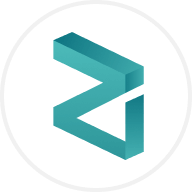У динамічному ландшафті блокчейн-технології й криптовалют існує постійне прагнення подолати розрив між децентралізованою мережею і традиційним інтернетом.
Щоб полегшити цей перехід, з'явилася Mask Network (MASK), інноваційна платформа, призначена для об'єднання соціальних мереж з технологією блокчейн, щоб допомогти світу перейти від Web2 до Web3.
Що таке Mask Network
Mask Network – це особлива комбінація протоколів і застосунків, призначених для впровадження функціональності та переваг блокчейну в мейнстрім. Mask Network має намір стати шлюзом, який дозволить своїм користувачам отримати доступ до світу Web3 через його розширення. За допомогою Mask Network користувачі можуть торгувати криптовалютами, отримувати доступ до платформ децентралізованих фінансовів (DeFi) та досліджувати світ невзаємозамінних токенів (NFT), і все це під час неквапливого перегляду своїх стрічок у Twitter або Facebook. Платформа також хоче вирішити питання безпеки соціальних мереж, дозволяючи користувачам зберігати свій контент прихованим і показувати його тільки цільовій аудиторії.
Команда Mask Network
Суджі Ян, досвідчений підприємець та інвестор з глибокими знаннями блокчейн-індустрії, очолює команду Mask Network. Йому допомагають такі ключові члени команди, як Чжу Хуа, технічний директор, та Чжен Цзе, операційний директор.
Разом вони беруть активну участь у низці проєктів, спрямованих на децентралізацію та безпеку інтернету. Це включає розробку децентралізованої системи обміну повідомленнями, безпечного децентралізованого рішення для зберігання файлів і платіжної платформи, побудованої на принципах децентралізації. Команда віддана своїй місії створення більш безпечного та децентралізованого інтернет-середовища.
Як працює Mask Network
Діяльність Mask Network ґрунтується на фундаментальній меті – безперешкодно з'єднати платформи соціальних мереж з децентралізованим інтернетом. Це досягається завдяки використанню розширення для браузера, яке слугує для користувачів шлюзом для доступу та взаємодії з децентралізованими застосунками (dApps) безпосередньо в межах їхніх звичних інтерфейсів соціальних мереж.
Нижче наведено ключові компоненти, які визначають функціональність Mask Network:
- Плагін Mask Network: слугує основним інструментом, який інтегрує функції Mask Network в платформи соціальних мереж. Завдяки цьому плагіну користувачі отримують можливість надсилати та отримувати зашифровані повідомлення, торгувати криптовалютами, взаємодіяти з DeFi-платформами та взаємодіяти з NFT – і все це у своїх стрічках соціальних мереж.
- Децентралізовані соціальні мережі (DApplets): це децентралізовані застосунки, легко інтегровані в плагін Mask Network. Використовуючи DApplets, користувачі можуть виконувати широкий спектр завдань, включаючи торгівлю криптовалютами, укладання кредитних угод, проведення опитувань тощо, і все це безпосередньо зі своїх сторінок у соціальних мережах.
Токеноміка MASK
Економічна структура або токеноміка мережі Mask Network обертається навколо її власного утиліті токена MASK. Загальна пропозиція токенів MASK обмежена 100 мільйонами.
Токени MASK розповсюджуються серед користувачів за допомогою різних механізмів, таких як майнінг ліквідності, винагорода за створення контенту та участь у мережі.
Випадки використання MASK
Токени MASK пропонують різноманітну корисність в екосистемі Mask Network. Вони слугують токеном управління, надаючи власникам можливість брати участь у процесах прийняття рішень, які формують розвиток мережі.
Крім того, токени MASK можна використовувати в протоколах DeFi, що дозволяє користувачам отримувати винагороду або брати участь у фармі прибутковості. Крім того, токени мають функціональність у сфері NFT, що дозволяє користувачам створювати, купувати, продавати або виставляти на аукціони ці унікальні цифрові активи.
Розподіл Mask
Розподіл токенів MASK виглядає наступним чином:
- 30%: Публічний розпродаж
- 15%: Команда Mask Network
- 10%: Партнери екосистеми
- 20%: Майнінг ліквідності
- 25%: Аірдропи спільноті
Шлях, який чекає на Mask Network
У короткостроковій перспективі Mask Network має намір розширити свою сферу охоплення, включивши в неї більше блокчейнів і DApps.
У довгостроковій перспективі Mask Network прагне зарекомендувати себе як вибір за замовчуванням для забезпечення конфіденційності у сфері блокчейну. Команда хоче зробити MASK мережею, де користувачі можуть вільно обмінюватися зашифрованими повідомленнями, переміщатися в інтернеті в приватному режимі й використовувати DApps, не турбуючись про те, що їхні дані можуть бути відстежені або комерціалізовані.

















